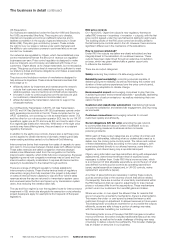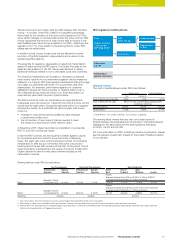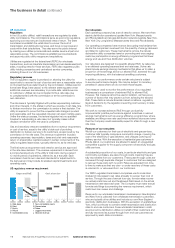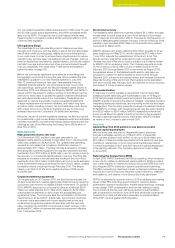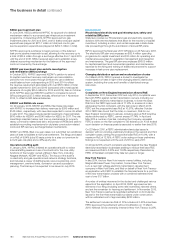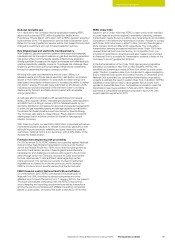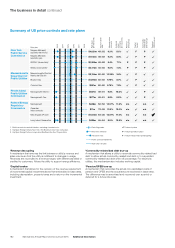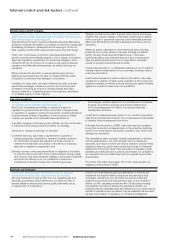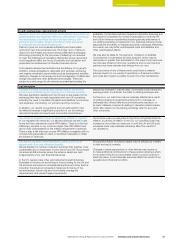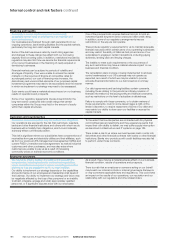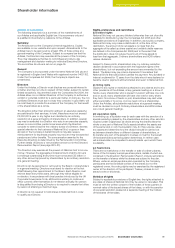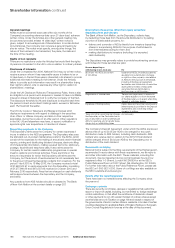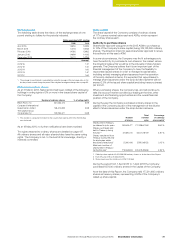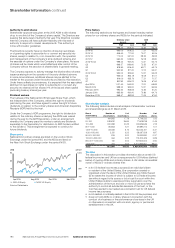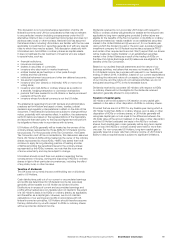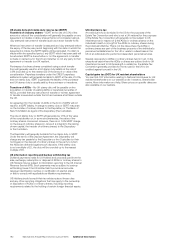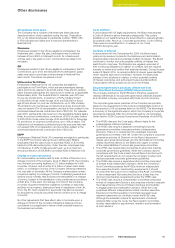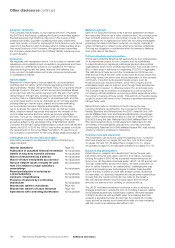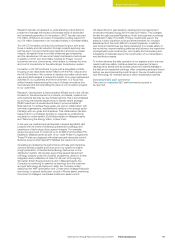National Grid 2016 Annual Report Download - page 188
Download and view the complete annual report
Please find page 188 of the 2016 National Grid annual report below. You can navigate through the pages in the report by either clicking on the pages listed below, or by using the keyword search tool below to find specific information within the annual report.
Financing and liquidity
An inability to access capital markets at commercially
acceptable interest rates could affect how we maintain and
grow our businesses.
Our businesses are financed through cash generated from our
ongoing operations, bank lending facilities and the capital markets,
particularly the long-term debt capital markets.
Some of the debt we issue is rated by credit rating agencies
and changes to these ratings may affect both our borrowing
capacity and borrowing costs. In addition, restrictions imposed by
regulators may also limit how we service the financial requirements
of our current businesses or the financing of newly acquired or
developing businesses.
Financial markets can be subject to periods of volatility and
shortages of liquidity. If we were unable to access the capital
markets or other sources of finance at competitive rates for
a prolonged period, our cost of financing may increase, the
discretionary and uncommitted elements of our proposed capital
investment programme may need to be reconsidered and the manner
in which we implement our strategy may need to be reassessed.
Such events could have a material adverse impact on our business,
results of operations and prospects.
Some of our regulatory agreements impose lower limits for the
long-term senior unsecured debt credit ratings that certain
companies within the Group must hold or the amount of equity
within their capital structures.
One of the principal limits requires National Grid plc to hold an
investment grade long-term senior unsecured debt credit rating.
In addition, some of our regulatory arrangements impose
restrictions on the way we can operate.
These include regulatory requirements for us to maintain adequate
financial resources within certain parts of our operating businesses
and may restrict the ability of National Grid plc and some of our
subsidiaries to engage in certain transactions, including paying
dividends, lending cash and levying charges.
The inability to meet such requirements or the occurrence of
any such restrictions may have a material adverse impact on our
business and financial condition.
The remediation plans in place or being implemented to address
control weaknesses in our US business may not operate as
expected, as a result of which we may be unable to provide
accurate financial information to our debt investors in a timely
manner.
Our debt agreements and banking facilities contain covenants,
including those relating to the periodic and timely provision of
financial information by the issuing entity and financial covenants,
such as restrictions on the level of subsidiary indebtedness.
Failure to comply with these covenants, or to obtain waivers of
those requirements, could in some cases trigger a right, at the
lender’s discretion, to require repayment of some of our debt and
may restrict our ability to draw upon our facilities or access the
capital markets.
Customers and counterparties
Customers and counterparties may not perform their obligations.
Our operations are exposed to the risk that customers, suppliers,
banks and other financial institutions and others with whom we do
business will not satisfy their obligations, which could materially
adversely affect our financial position.
This risk is significant where our subsidiaries have concentrations of
receivables from gas and electricity utilities and their affiliates, such
as from our previous LIPA managed services agreement (MSA) and
current PSEG-LI transition services agreement, as well as industrial
customers and other purchasers, and may also arise where
customers are unable to pay us as a result of increasing
commodity prices or adverse economic conditions.
To the extent that counterparties are contracted with for physical
commodities (gas and electricity) and they experience events that
impact their own ability to deliver, we may suffer supply interruption
as described in Infrastructure and IT systems on page 184.
There is also a risk to us where we invest excess cash or enter into
derivatives and other financial contracts with banks or other financial
institutions. Banks who provide us with credit facilities may also fail
to perform under those contracts.
Employees and others
We may fail to attract, develop and retain employees with the
competencies, including leadership and business capabilities,
values and behaviours required to deliver our strategy and vision
and ensure they are engaged to act in our best interests.
Our ability to implement our strategy depends on the capabilities
and performance of our employees and leadership at all levels of
the business. Our ability to implement our strategy and vision may
be negatively affected by the loss of key personnel or an inability
to attract, integrate, engage and retain appropriately qualified
personnel, or if significant disputes arise with our employees.
As a result, there may be a material adverse effect on our business,
financial condition, results of operations and prospects.
There is a risk that an employee or someone acting on our behalf
may breach our internal controls or internal governance framework
or may contravene applicable laws and regulations. This could have
an impact on the results of our operations, our reputation and our
relationship with our regulators and other stakeholders.
186 National Grid Annual Report and Accounts 2015/16 Additional Information
Internal control and risk factors continued


